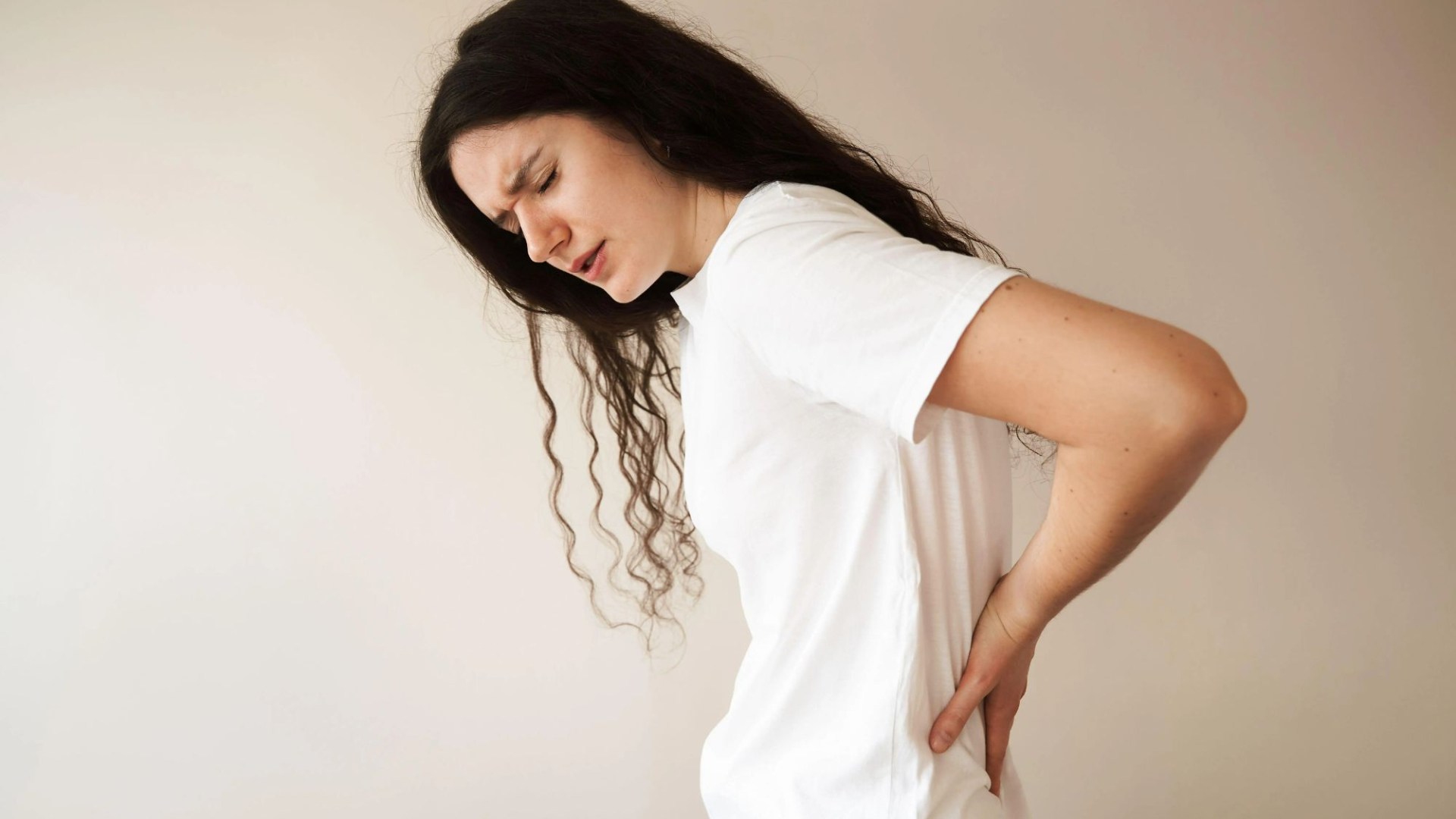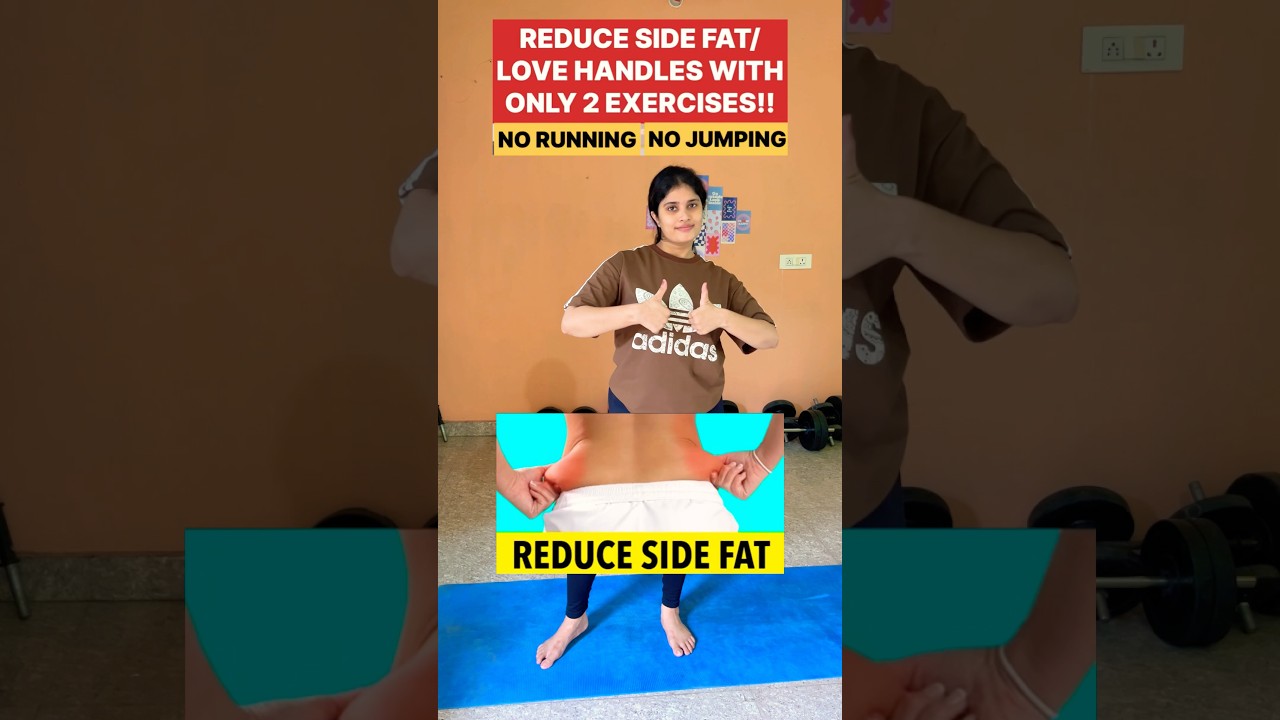Health & fitness
Rise of ‘girls’ disease’ that’s driving young men to attempt suicide – & it’s fuelled by Love Island & Gladiators – The Sun

GEORGE Mycock had decided he was going to kill himself. He had been locked away in his room at Durham University for several weeks, full of shame, bingeing on junk food.
“Every couple of months, I hid in my room for up to two weeks, ordering food or sneaking out at night to a shop,” he recalls.
“I knew it couldn’t continue, so I planned killing myself. I had the date in mind and thought about how I was going to do it.”
George, from Stoke-on-Trent, could hide this habit because he was popular, handsome, outgoing, and hence.
None of his family or friends knew the depths of his despair.
They had no clue that an obsession with attaining the perfect physique had morphed into a self-destructive spiral of compulsive training, followed by binge-eating two large pizzas, a box of fried chicken, and two tubs of Ben & Jerry’s.
Though he didn’t know it then, George, now 28, was struggling with the often-misunderstood body dysmorphic disorder (BDD).
The mental health condition sees sufferers develop a preoccupation with an imagined or slight defect in their appearance, which impacts the normal functioning of their lives.
It’s estimated that one in 50 people in the UK have some form of BDD, with young women aged 17-19 the most affected.
However, the scales appear to be tipping. A 2021 study found that 54% of men displayed signs of BDD, compared to 49% of women.
The number of men, particularly young men, gripped by body dysmorphic disorder continues to rise
Dr. William Shanahan
That figure appears to be rising rapidly, with one US study reporting that the percentage of men dissatisfied with their overall appearance has nearly tripled in the past 25 years.
Experts say this is fuelled by images of muscle-bound bodies that men are being bombarded with via TV – on programmes such as Love Island and Gladiators – social media influencers, and bulked-up Hollywood actors.
A-lister Zac Efron has openly talked about his struggles with body image and revealed he took so many diuretics to get into shape for the 2017 movie Baywatch that he fell into “a pretty bad depression.”
“The number of men, particularly young men, gripped by body dysmorphic disorder continues to rise,” says Dr. William Shanahan, clinical director of addictions at Priory Hospital Roehampton in south-west London.
Help for mental health
If you, or anyone you know, needs help dealing with mental health problems, the following organisations provide support.
The following are free to contact and confidential:
Mind, www.mind.org, provide information about types of mental health problems and where to get help for them. Email info@mind.org.uk or call the infoline on 0300 123 3393 (UK landline calls are charged at local rates, and charges from mobile phones will vary).
YoungMinds run a free, confidential parents helpline on 0808 802 5544 for parents or carers worried about how a child or young person is feeling or behaving. The website has a chat option too.
Rethink Mental Illness, www.rethink.org, gives advice and information service offers practical advice on a wide range of topics such as The Mental Health Act, social care, welfare benefits, and carers rights. Use its website or call 0300 5000 927 (calls are charged at your local rate).
Heads Together, www.headstogether.org.uk, is the a mental health initiative spearheaded by The Royal Foundation of The Prince and Princess of Wales.
He explains: “We’ve become much more conscious in the UK about the widespread media depiction of unattainable body images for women, but we need to raise more awareness of body dysmorphia for young men.
The increasingly lean and muscular body type displayed in the media rarely exists in nature.”
The type of BDD that George suffered from – muscle dysmorphia (MD), also known as “bigorexia,” typified by an intense preoccupation with insufficient muscularity – is also on the rise. In the UK, the BDD Foundation estimates that one in 10 male gym-goers have it, and that figure is rising.
Sufferers are at high risk of steroid abuse and eating disorders and struggle to maintain relationships because of the disabling anxiety and shame, while 50% have attempted suicide at least once.
“For young men, the disorder is intertwined with rising rates of anabolic steroid addiction, as people turn to drug misuse to try to ease their anxieties,” says Dr. Shanahan.
“We’re supporting more and more patients affected by this issue in our services across the country and are increasingly concerned by the ongoing trend.”
‘Whenever I binge ate, I felt so much shame that I would hide away and lock myself in my room’
The seeds of George’s condition were sown in childhood. A keen rugby player, he was forced to stop playing at 13 after breaking his spine at a game.
He spent the next year in and out of hospital, started comfort eating, and put on weight.
George says: “This was the first time I remember feeling ashamed of my body.
“Eventually, I returned to school weighing around 6-7st more.
“Not many people pointed out my weight gain, but it was obvious to my hyper-aware mind that they were treating me differently.
“I started to run a lot, and I barely ate anything.
“I would run for an hour each day and go to the gym.
“I began to lose a lot of weight, and I got a lot of compliments.”
The compliments drove George to push himself even further, eating less and training more, which he managed to hide from his family.
Whenever I binge ate, I felt so much shame, I would lock myself in my room. I’d feel so horrendous about myself, like I’d failed.
George Mycock
He explains: “I started restricting food severely at around 15 or 16 years old, though the thought that my symptoms could be an eating disorder didn’t cross my mind.
“On social media, every man in the fitness industry has a six-pack, big shoulders, big arms, veins popping.
“I thought: ‘OK, this is what I’m supposed to be like. I don’t need to get thinner; I need to be more muscular.’
“I was scared of gaining body fat, so I’d eat and then do excessive exercise or make myself sick.
“Later, when I started university, I stopped the purging and would have these uncontrollable binges.
“Whenever I binge ate, I felt so much shame, I would lock myself in my room. I’d feel so horrendous about myself, like I’d failed,” he says.
Outwardly, George had a build most men would kill for.
READ MORE MEN’S HEALTH STORIES
But looking in the mirror, he saw something different. “I zoomed in on body parts I thought were not big enough.
I analysed every aspect of my physique. It was exhausting. I can remember going to lectures and being so paranoid, trying to hide certain parts of my stomach or whatever it was that I felt wasn’t right. I was constantly scared and ashamed.
“I always needed a girlfriend because I saw that as further proof of my masculinity, but I was incredibly insecure,” he says.
Eventually, the psychological and physical stress became overwhelming, and by 2018, George decided to end his life.
Thankfully, a friend intervened. “She knocked on the door and called out,” he recalls.
“Something in me told me to answer.
“She could see something was wrong and I broke down and told her how horrible I felt. I didn’t tell her I was planning to end my life, but I told her how hopeless I felt and she encouraged me to speak to my family and get help.
“When I confided in my parents, they weren’t always sure how to handle it.
“The moments I remember most fondly were when they would just sit with me and say that they were going to be there for me, no matter what.
“I can’t express enough how much that can help someone in my situation.”
George was prescribed antidepressants and started counselling, but despite having all the symptoms of MD and BDD, he’s never been diagnosed.
“This is not unusual – getting a diagnosis is a lottery, and the condition is still not fully understood.
Priya Tew is a registered dietician and spokesperson for the British Dietetic Association.
She has seen a rise in cases of men with BDD at her practice in the last few years and says that cases are likely to be under-reported.
“It has become more prevalent, but a lot of men don’t see it as a problem or would not necessarily identify it as important enough to see the GP about,” she says.
Priya believes social media is one of the main factors fuelling it.
She adds: “People are bombarded with content, and if you show an interest, the algorithm feeds you more of the same.
“TikTok is full of personal trainers walking around with their tops off, showing their rippling six-packs.
“It’s almost the norm. It creates the illusion that if you don’t look like that, there’s something wrong with you.”
Worryingly, research has found evidence of a “promuscularity” community online, much like the pro-ana community that glorifies eating disorders.
The websites that form this group reinforce and encourage rigid dietary practices and exercise rules, and they extol the benefits of muscularity.
The damaging effects include low self-esteem, social isolation, disordered eating, strained relationships, risk of injury, and obsessive behaviour.
Priya says: “It starts to take over life in an extreme way.”
Mother-of-two Anna* has seen this only too well.
Her 16-year-old son Ben* goes to the gym daily.
His Instagram feed is full of male fitness influencers; he buys protein powders, bars, and supplements and is starting to hide some of his eating habits.
Anna had heard of BDD, though she believed it only affected girls – but now she fears her son is developing it, and MD in particular.
‘Honestly, the biggest support I got was from my friends at the gym’
Anna says: “Ben was overweight when he was younger.
“He liked sweets, and he was never an active child, preferring gaming to sport.
“He wasn’t interested in his appearance until he was around 14.
“He naturally lost weight when he had a growth spurt, and people commented that he looked well.
“He started to exercise at home, then got ideas and programmes from YouTube and social media.
If there’s one thing I’ve learned, it’s that, no matter how lost you feel – even if you don’t know who you are, who you could be, or what that means – things will get better.
George Mycock
“At first, it all seemed healthy.”
Initially, when Ben skipped the odd dessert, Anna was unconcerned. But then he started leaving all carbs at mealtimes. “He got defensive and said potatoes and pasta were fattening.
“Then he started buying protein shakes and supplements because he said people on social media recommended them for muscle building.
“When I pointed out he needed a balanced diet, he said he didn’t want to get fat again.
“He also started spending more time at the gym and now goes every day, sometimes before school and after, and at the weekend.
“During summer, we had planned trips to the cinema, which he wasn’t bothered about.
“He only hangs around with friends who go to the gym.
“I don’t want to discourage him from being healthy, but I worry that he’s crossed a line,” she says.
“His dad and I have spoken to him, and we’re both concerned.
“His dad thinks it’s less of a problem, but I wouldn’t want him to get any more obsessive. I’m hoping it’s a fad he’ll grow out of.”
Priya explains that, for worried parents, the key is to keep talking.
She says: “It’s about trying to work out what’s going on in their life and what is driving this behaviour.
“It’s important the child knows they are loved, and if a parent is concerned, get educated about the condition and get support.”
George turned his experiences into something positive and now runs MyoMinds, one of the few organisations in the UK specialising in helping MD and BDD sufferers, with a community where people can get information, advice, and share experiences.
“I consult on several different clinical and research projects, and when I speak to clinicians, one of the things that always comes up is the preconception that exercise and a muscular body is synonymous with health,” George says.
“Honestly, the biggest support I got was from my friends in the gym.
“When I started being honest with them and talking to them, I realised how many of them had similar experiences and thoughts.”
Testament to the fact that recovery is possible, George believes opening up is the first step.
He says: “If there’s one thing I’ve learned, it’s that, no matter how lost you feel – even if you don’t know who you are, who you could be, or what that means – things will get better.”
For advice and support in dealing with BDD, visit Mind.org.uk.
*Names have been changed. Photography: Getty Images, Splash, The Times, The Sunday Times. Sources: **Better ***BMJ
Womens Workouts
SUPER WEIGHT LOSE EXERCISES AT HOME BELLY LOSE THAT"S YOU WANT

SUPER WEIGHT LOSE EXERCISES AT HOME BELLY LOSE THAT”S YOU WANT
She Loved Bodybuilder
Nitish Rajput
NH Comedy Duniya
Relieence Entertainment
Fitness Motivation
Born World
Gym worldzstatus
galaxy health club
Gym Bio
#motivation #GymBio #BornWorld
#gymworldzstatus #galaxyhealthclub #fitnessmotivation #ARMWRESTING.TV
TarunGill
#ANATOLY
source
Womens Workouts
Intense 25 min Full Body FAT BURNING Workout 🙋♀️| No Jumping Beginner Friendly

It’s the 2019 Summer Shred Challenge! Time to burn that belly fat away, lose weight in time to get that summer body! This full body workout is 25 mins long, has warm ups and cool down stretches. Lots of variations of high intensity exercises to help you burn those calories and lose weight.
Enjoy the workouts, and please do hit that like button, subscribe and leave a comment below.
35 Days Summer Shredding Program:
https://www.chloeting.com/program/
☆ Summer Shred Challenge Videos ☆
Episode 1 – Full Body Burn – https://youtu.be/Lscqihirc3c
Episode 2 – 11 Abs – https://youtu.be/6TmQiugy_qw
Episode 3 – HIIT Workout – https://youtu.be/mvlfZ43ehmE
Episode 4 – Arms & Back – https://youtu.be/d8STqg1VvN0
Episode 5 – Booty & Toned Legs – https://youtu.be/mTgc6gpCEng
Weight Loss Meal Ideas – https://youtu.be/q65enzklzqo
✚ SHOP MY MERCH!
https://store.chloeting.com
✚ Free Recipes
https://www.chloeting.com/recipes/
✚ Sponsor this channel
https://www.youtube.com/chloeting/join
Sub to my 2nd channel
https://www.youtube.com/channel/UCBrcDabYtwbR1VIhwH5efZA?sub_confirmation=1
✚ My links
https://www.instagram.com/chloe_t/
https://www.instagram.com/itschloeting/
twitch.tv/chloeting
https://discord.gg/chloeting
https://sptfy.com/chloeting
☆Music by☆
MBB – Wake Up
SoundCloud: https://soundcloud.com/mbbofficial
https://bit.ly/DownloadWakeUp
Track: EMDI x RØGUENETHVN – Let Your Heartbreak (feat. Leo the Kind)[NCS Release]
Music provided by NoCopyrightSounds.
Watch: https://youtu.be/fCODoi9feMo
Free Download / Stream: http://ncs.io/LetYourHeartbreakID
Track: Diamond Eyes – Everything [NCS Release]
Music provided by NoCopyrightSounds.
Watch: https://youtu.be/_XspQUK22-U
Free Download / Stream: http://ncs.io/EverythingYO
Music provided by Monstercat:
Bishu – Way Up
https://youtube.com/monstercat
https://youtube.com/monstercatinstinct
Vicetone feat. Meron Ryan – Walk Thru Fire
https://youtube.com/monstercat
https://youtube.com/monstercatinstinct
Conro – Remember You
https://youtube.com/monstercat
https://youtube.com/monstercatinstinct
Lil Hank – Hank’s Happy Place
https://youtube.com/monstercat
https://youtube.com/monstercatinstinct
#homeworkout #fullbodyexercise #exercise
IMPORTANT DISCLAIMER: Please note that all of my videos are titled according to SEO best practices for content discoverability. Unfortunately this may mean that video titles are subjective and shouldn’t be seen as absolute truth. As an example, targeting fat reduction is not scientifically proven but a video title might suggest otherwise. When following any of my videos, please take precaution to exercise in a safe environment, and I highly suggest seeing a health and fitness professional to give you advice on your exercise form and dietary needs. Every person is unique and there is no one size fits all solution to health or fitness. I am not a medical professional and your health and safety is the utmost importance.
source
Womens Workouts
Yoni Egg Exercise #yonieggs #crystals #vagina #workout #tone
Womens Workouts
30 MIN SAVAGE HOME WORKOUT – No Equipment – Full Body HIIT – advanced

A 30 minute workout packed with strength building savage HIIT exercises which you can do anywhere! Starting with some low intensity warm up style exercises to get your body ready for the full body burn, ending with a short cool down. Let’s get it done!!
Please remember that we all are different and that you make this YOUR OWN workout… take a longer break when you need to.
WORKOUT DETAILS
👉🏼 Duration: 30
👉🏼 No Equipment
👉🏼 50 Sec Work, 10 Sec Rest
👉🏼 Level: Medium to Advanced
👉🏼 No Repeat
* with Cool Down Stretches
Music: https://www.epidemicsound.com
📷 GEAR I USE:
Camera: https://amzn.to/3aticKD
Lens: https://amzn.to/3cCiujR
Tripod: https://amzn.to/2zontX9
Microphone: https://amzn.to/34VaKXH
💪🏼 MY HOME TRAINING GUIDE: http://growingannanas.com
» Subscribe to my Channel for weekly workouts: http://bit.ly/2QLvpXn
» Instagram: http://bit.ly/2ZSdHFR
» Facebook: http://bit.ly/2SVkgpE
✉ Contact (business inquiries): anna@fyndafit.com
D I S C L A I M E R
Tabata is an advanced level of the workout and is not suitable for beginners. If you are a newbie start with simple and easy exercise before attempting Tabata. Performing Tabata, in the beginning, might strain your muscles and you may get injured.
This channel offers health, fitness and nutritional information. You should not rely on this information as a substitute for, nor does it replace, professional medical advice, diagnosis, or treatment. The use of any information provided on this channel is solely at your own risk.
source
Health & fitness
The terrifying reason you should never leave a UTI untreated or risk deadly condition that kills 1 in 5

ANYONE who’s ever had a UTI will wince at the memory.
That insistent need to pee and the excruciating burning sensation that follows once you do is hard for most to forget.
UTIs are often associated with young women and having lots of sex.
So much so, that it’s are sometimes dubbed ‘honeymoon cystitis’ – but they really can affect anyone regardless of age, or gender.
Nearly half of women and 20 per cent of men will experience a urinary tract infection (UTI) at some point in their lives.
Not only are UTIs painful, but they can also be dangerous, sometimes leading to sepsis – a potentially fatal condition.
Sepsis happens when the body attacks itself in reaction to an infection, such as pneumonia and Covid.
It has a mortality rate of over 40 per cent, and research shows that around 25 per cent of sepsis cases begin as UTIs.
This happens because bacteria from the urinary tract can easily enter the bloodstream.
Older women, already at higher risk for sepsis, are particularly vulnerable.
But the risk of UTI-induced sepsis also extends to younger women.
Twenty-four year old Erin Montgomery was left fighting for her life in hospital after a “harmless” infection spread from her urinary tract to her kidneys and seeped into her bloodstream, causing sepsis.
Dr Andrew Conway Morris – Sepsis Research FEAT’s medical director – told Sun Health: “Although the great majority of urinary tract infections are self-limiting and will resolve with simple antibiotics or even just hydration and time, infections of the urinary tract are also the second commonest cause of sepsis in the UK.
“Sepsis is where the body’s response to infection is so severe that it damages the patient’s own organs, and can lead to the need for admission to intensive care for life support or even death.
“Infections in the upper part of the urinary tract, involving the kidneys, are the most common urinary cause of sepsis.”
An uncomplicated UTI – which is an infection in an otherwise healthy person – will typically cause symptoms such as pain while peeing, a frequent and sudden urge to go to the loo, cloudy wee and lower tummy or back pain.
But there are certain telltale symptoms that distinguish uncomplicated UTIs from deadly sepsis.
According to Dr Conway Morris, these include:
- Increased breathing rate
- Cold hands and feet with mottled skin or a rash
- Confusion or reduced consciousness
- Very high temperature or uncontrolled shivering
- Feeling more unwell than one has ever felt before
- Severe pain in the loins (to the sides of the small of the back) can also indicate a problem with the kidneys
You should seek medical attention urgently if you experience any of the above symptoms, Dr Conway Morris warned.
“Patients should trust their instincts and seek urgent medical advice if they have these symptoms,” he told Sun Health.
“If the doctor doesn’t think they have sepsis at the time of presentation and they are being discharged, patients should ask what symptoms they should look out for and what should prompt them to come back.
“If they do start to feel more unwell, patients should not be afraid to come back for another review,” the physician added.
‘INDISCRIMINATE ILLNESS’
Colin Graham, COO at Sepsis Research FEAT, warned that sepsis can affect anyone and urged people to be aware of the symptoms so they can act quickly if it strikes.
“Sepsis is an indiscriminate, devastating illness which takes the lives of around 50,000 people every year in the UK,” he said.
“Despite these shocking figures, many people are still unaware of how serious sepsis is.
“That is why raising awareness of this deadly condition is vital, so that more people are able to recognise the symptoms and act quickly to seek urgent medical attention and improve chances of survival.”
Erin Montgomery’s brush with deadly sepsis

Erin was left fighting for life in hospital after what doctors thought was a harmless urinary tract infection.
She she felt her temperature rise and her heartbeat quicken while watching TV in September 2023.
“I was just on the couch when I started getting hot and had a pounding heart,” the 24-year-old said.
“At this point I already knew something wasn’t quite right as I was calm and sitting quietly and hadn’t done any exercise or anything.”
Things took a tun for the worse when Erin went to the toilet, as the mere act of peeing left her feeling like she “was going to die”.
“My heart rate kept increasing more and more each time I went,” she recalled.
Erin called 111 and called 111 and was reportedly told her symptoms were likely caused by a UTI, but she continued to explain how “abnormal” she felt and was told to go to A&E two hours later.
The 24-year-old was told that her body was being ravaged by sepsis, after an infection of her urinary tract spread to her kidneys and bloodstream.
Read more on Erin’s story here.
“Sepsis can be hard to recognise and diagnose and symptoms can manifest in many different ways.”
He named several key symptoms to look out for, such as a high or low temperature, uncontrolled shivering, confusion, peeing less than usual and having blotchy or cold arms and legs.
“On their own, some of these symptoms can be an indication of other health problems,” Colin warned.
“Someone with sepsis might also not show all of these symptoms at once.
“A combination of two or more symptoms, becoming progressively worse, means medical attention is needed and sufferers should call 999 or go to A&E.”
What is a UTI?
Urinary tract infections (UTIs) are usually caused by E.coli bacteria – found in poo – entering the urinary tract.
The bacteria enter through the tube that carries pee out of the body (urethra).
Women are more likely than men to pick up UTIs as they have a shorter urethra than men.
This means bacteria are more likely to reach the bladder or kidneys and cause an infection.
According to the NHS, things that increase the risk of bacteria getting into the bladder include:
- Having sex
- Pregnancy
- Conditions that block the urinary tract – such as kidney stones
- conditions that make it difficult to fully empty the bladder – such as an enlarged prostate in men and constipation in children
- Urinary catheters (a tube in your bladder used to drain urine)
- Having a weakened immune system – for example, people with diabetes or people having chemotherapy
- Not drinking enough fluids
- Not keeping the genital area clean and dry
Check if it’s a UTI
Symptoms of a urinary tract infection (UTI) may include:
- Pain or a burning sensation when peeing (dysuria)
- Needing to pee more often than usual
- Needing to pee more often than usual during the night (nocturia)
- Needing to pee suddenly or more urgently than usual
- Pee that looks cloudy
- Blood in your pee
- Lower tummy pain or pain in your back, just under the ribs
- A high temperature, or feeling hot and shivery
- A very low temperature below 36C
Your pee may also be dark or smell. If this is your only symptom, it might be because you’ve not been drinking enough water.
What to do if you think you have a UTI
If you think you have UTI symptoms, you should speak to your GP to discuss treatment options.
Most people will need antibiotics.
Some people may be prescribed a ‘delayed antibiotic’, meaning they’ll be asked only to use it if their symptoms don’t go away after a certain amount of time.
If you keep getting UTIs, your GP might recommend you have a low dose of antibiotics over a long period of time or refer you to a specialist for more tests and treatments.
For women who have gone through menopause, there is evidence that vaginal oestrogen creams can reduce UTI symptoms.
Source: NHS
Womens Workouts
Reduce sidebellyfat #sidefat #sidefatloss #fatloss #exercise #youtubeshorts #weightloss #bodyfat
-

 Womens Workouts2 weeks ago
Womens Workouts2 weeks ago3 Day Full Body Women’s Dumbbell Only Workout
-

 Science & Environment3 weeks ago
Science & Environment3 weeks agoHow to unsnarl a tangle of threads, according to physics
-

 Science & Environment2 weeks ago
Science & Environment2 weeks agoHyperelastic gel is one of the stretchiest materials known to science
-

 Technology3 weeks ago
Technology3 weeks agoWould-be reality TV contestants ‘not looking real’
-

 Science & Environment2 weeks ago
Science & Environment2 weeks ago‘Running of the bulls’ festival crowds move like charged particles
-

 Science & Environment3 weeks ago
Science & Environment3 weeks agoMaxwell’s demon charges quantum batteries inside of a quantum computer
-

 News2 weeks ago
News2 weeks agoOur millionaire neighbour blocks us from using public footpath & screams at us in street.. it’s like living in a WARZONE – WordupNews
-

 Science & Environment3 weeks ago
Science & Environment3 weeks agoHow to wrap your mind around the real multiverse
-

 Science & Environment2 weeks ago
Science & Environment2 weeks agoSunlight-trapping device can generate temperatures over 1000°C
-

 Science & Environment3 weeks ago
Science & Environment3 weeks agoLiquid crystals could improve quantum communication devices
-

 Science & Environment2 weeks ago
Science & Environment2 weeks agoQuantum ‘supersolid’ matter stirred using magnets
-

 Science & Environment3 weeks ago
Science & Environment3 weeks agoITER: Is the world’s biggest fusion experiment dead after new delay to 2035?
-

 Science & Environment2 weeks ago
Science & Environment2 weeks agoPhysicists are grappling with their own reproducibility crisis
-

 Science & Environment2 weeks ago
Science & Environment2 weeks agoQuantum forces used to automatically assemble tiny device
-
News3 weeks ago
the pick of new debut fiction
-

 Science & Environment3 weeks ago
Science & Environment3 weeks agoWhy this is a golden age for life to thrive across the universe
-

 News3 weeks ago
News3 weeks agoYou’re a Hypocrite, And So Am I
-

 Sport2 weeks ago
Sport2 weeks agoJoshua vs Dubois: Chris Eubank Jr says ‘AJ’ could beat Tyson Fury and any other heavyweight in the world
-

 Science & Environment3 weeks ago
Science & Environment3 weeks agoCaroline Ellison aims to duck prison sentence for role in FTX collapse
-

 Science & Environment3 weeks ago
Science & Environment3 weeks agoTime travel sci-fi novel is a rip-roaringly good thought experiment
-

 Science & Environment3 weeks ago
Science & Environment3 weeks agoLaser helps turn an electron into a coil of mass and charge
-

 Science & Environment2 weeks ago
Science & Environment2 weeks agoNuclear fusion experiment overcomes two key operating hurdles
-

 Technology1 week ago
Technology1 week ago‘From a toaster to a server’: UK startup promises 5x ‘speed up without changing a line of code’ as it plans to take on Nvidia, AMD in the generative AI battlefield
-

 Football1 week ago
Football1 week agoFootball Focus: Martin Keown on Liverpool’s Alisson Becker
-

 Science & Environment2 weeks ago
Science & Environment2 weeks agoRethinking space and time could let us do away with dark matter
-

 Science & Environment3 weeks ago
Science & Environment3 weeks agoNerve fibres in the brain could generate quantum entanglement
-

 MMA1 week ago
MMA1 week agoConor McGregor challenges ‘woeful’ Belal Muhammad, tells Ilia Topuria it’s ‘on sight’
-
Business1 week ago
Eurosceptic Andrej Babiš eyes return to power in Czech Republic
-

 News3 weeks ago
News3 weeks ago▶️ Hamas in the West Bank: Rising Support and Deadly Attacks You Might Not Know About
-

 Science & Environment2 weeks ago
Science & Environment2 weeks agoFuture of fusion: How the UK’s JET reactor paved the way for ITER
-
Business1 week ago
Should London’s tax exiles head for Spain, Italy . . . or Wales?
-

 News2 weeks ago
News2 weeks agoIsrael strikes Lebanese targets as Hizbollah chief warns of ‘red lines’ crossed
-

 Science & Environment2 weeks ago
Science & Environment2 weeks agoA new kind of experiment at the Large Hadron Collider could unravel quantum reality
-

 News3 weeks ago
News3 weeks ago▶️ Media Bias: How They Spin Attack on Hezbollah and Ignore the Reality
-

 News3 weeks ago
News3 weeks agoNew investigation ordered into ‘doorstep murder’ of Alistair Wilson
-

 Science & Environment2 weeks ago
Science & Environment2 weeks agoUK spurns European invitation to join ITER nuclear fusion project
-

 CryptoCurrency2 weeks ago
CryptoCurrency2 weeks agoCardano founder to meet Argentina president Javier Milei
-

 Science & Environment2 weeks ago
Science & Environment2 weeks agoMeet the world's first female male model | 7.30
-

 Science & Environment2 weeks ago
Science & Environment2 weeks agoX-rays reveal half-billion-year-old insect ancestor
-

 Science & Environment3 weeks ago
Science & Environment3 weeks agoA slight curve helps rocks make the biggest splash
-
Business3 weeks ago
JPMorgan in talks to take over Apple credit card from Goldman Sachs
-

 CryptoCurrency2 weeks ago
CryptoCurrency2 weeks agoBitcoin bulls target $64K BTC price hurdle as US stocks eye new record
-

 Womens Workouts2 weeks ago
Womens Workouts2 weeks agoBest Exercises if You Want to Build a Great Physique
-

 News2 weeks ago
News2 weeks agoWhy Is Everyone Excited About These Smart Insoles?
-

 News2 weeks ago
News2 weeks agoFour dead & 18 injured in horror mass shooting with victims ‘caught in crossfire’ as cops hunt multiple gunmen
-

 Technology2 weeks ago
Technology2 weeks agoRobo-tuna reveals how foldable fins help the speedy fish manoeuvre
-

 CryptoCurrency2 weeks ago
CryptoCurrency2 weeks agoEthereum is a 'contrarian bet' into 2025, says Bitwise exec
-

 Health & fitness3 weeks ago
Health & fitness3 weeks agoThe secret to a six pack – and how to keep your washboard abs in 2022
-

 Science & Environment3 weeks ago
Science & Environment3 weeks agoQuantum time travel: The experiment to ‘send a particle into the past’
-

 Science & Environment2 weeks ago
Science & Environment2 weeks agoWhy we need to invoke philosophy to judge bizarre concepts in science
-

 CryptoCurrency2 weeks ago
CryptoCurrency2 weeks agoBitcoin miners steamrolled after electricity thefts, exchange ‘closure’ scam: Asia Express
-

 CryptoCurrency2 weeks ago
CryptoCurrency2 weeks agoDorsey’s ‘marketplace of algorithms’ could fix social media… so why hasn’t it?
-

 CryptoCurrency2 weeks ago
CryptoCurrency2 weeks agoDZ Bank partners with Boerse Stuttgart for crypto trading
-

 CryptoCurrency2 weeks ago
CryptoCurrency2 weeks agoLow users, sex predators kill Korean metaverses, 3AC sues Terra: Asia Express
-

 Womens Workouts2 weeks ago
Womens Workouts2 weeks agoEverything a Beginner Needs to Know About Squatting
-

 Womens Workouts2 weeks ago
Womens Workouts2 weeks ago3 Day Full Body Toning Workout for Women
-

 Travel2 weeks ago
Travel2 weeks agoDelta signs codeshare agreement with SAS
-

 Technology2 weeks ago
Technology2 weeks agoGet ready for Meta Connect
-

 Servers computers2 weeks ago
Servers computers2 weeks agoWhat are the benefits of Blade servers compared to rack servers?
-

 Politics2 weeks ago
Politics2 weeks agoHope, finally? Keir Starmer’s first conference in power – podcast | News
-

 Technology1 week ago
Technology1 week agoThe best robot vacuum cleaners of 2024
-

 Health & fitness1 week ago
Health & fitness1 week agoThe 7 lifestyle habits you can stop now for a slimmer face by next week
-

 Sport2 weeks ago
Sport2 weeks agoUFC Edmonton fight card revealed, including Brandon Moreno vs. Amir Albazi headliner
-

 Technology2 weeks ago
Technology2 weeks agoiPhone 15 Pro Max Camera Review: Depth and Reach
-

 News2 weeks ago
News2 weeks agoBrian Tyree Henry on voicing young Megatron, his love for villain roles
-

 Health & fitness3 weeks ago
Health & fitness3 weeks agoThe maps that could hold the secret to curing cancer
-

 Science & Environment2 weeks ago
Science & Environment2 weeks agoBeing in two places at once could make a quantum battery charge faster
-

 CryptoCurrency2 weeks ago
CryptoCurrency2 weeks agoRedStone integrates first oracle price feeds on TON blockchain
-

 CryptoCurrency2 weeks ago
CryptoCurrency2 weeks agoBlockdaemon mulls 2026 IPO: Report
-

 CryptoCurrency2 weeks ago
CryptoCurrency2 weeks agoCoinbase’s cbBTC surges to third-largest wrapped BTC token in just one week
-
Politics2 weeks ago
UK consumer confidence falls sharply amid fears of ‘painful’ budget | Economics
-

 Science & Environment2 weeks ago
Science & Environment2 weeks agoCNN TÜRK – 🔴 Canlı Yayın ᴴᴰ – Canlı TV izle
-

 News1 week ago
News1 week agoUS Newspapers Diluting Democratic Discourse with Political Bias
-

 Technology1 week ago
Technology1 week agoQuantum computers may work better when they ignore causality
-

 Science & Environment2 weeks ago
Science & Environment2 weeks agoHow one theory ties together everything we know about the universe
-

 CryptoCurrency2 weeks ago
CryptoCurrency2 weeks agoCrypto scammers orchestrate massive hack on X but barely made $8K
-

 Science & Environment2 weeks ago
Science & Environment2 weeks agoTiny magnet could help measure gravity on the quantum scale
-

 Science & Environment2 weeks ago
Science & Environment2 weeks agoA tale of two mysteries: ghostly neutrinos and the proton decay puzzle
-

 Science & Environment2 weeks ago
Science & Environment2 weeks agoHow do you recycle a nuclear fusion reactor? We’re about to find out
-

 CryptoCurrency2 weeks ago
CryptoCurrency2 weeks agoDecentraland X account hacked, phishing scam targets MANA airdrop
-

 CryptoCurrency2 weeks ago
CryptoCurrency2 weeks agoTelegram bot Banana Gun’s users drained of over $1.9M
-

 CryptoCurrency2 weeks ago
CryptoCurrency2 weeks agoVonMises bought 60 CryptoPunks in a month before the price spiked: NFT Collector
-

 CryptoCurrency2 weeks ago
CryptoCurrency2 weeks agoSEC asks court for four months to produce documents for Coinbase
-

 CryptoCurrency2 weeks ago
CryptoCurrency2 weeks ago‘Silly’ to shade Ethereum, the ‘Microsoft of blockchains’ — Bitwise exec
-

 CryptoCurrency2 weeks ago
CryptoCurrency2 weeks agoVitalik tells Ethereum L2s ‘Stage 1 or GTFO’ — Who makes the cut?
-

 CryptoCurrency2 weeks ago
CryptoCurrency2 weeks ago‘No matter how bad it gets, there’s a lot going on with NFTs’: 24 Hours of Art, NFT Creator
-
Business2 weeks ago
Thames Water seeks extension on debt terms to avoid renationalisation
-
Business2 weeks ago
How Labour donor’s largesse tarnished government’s squeaky clean image
-
Politics2 weeks ago
‘Appalling’ rows over Sue Gray must stop, senior ministers say | Sue Gray
-

 News2 weeks ago
News2 weeks agoBrian Tyree Henry on voicing young Megatron, his love for villain roles
-
News2 weeks ago
The Project Censored Newsletter – May 2024
-

 Womens Workouts2 weeks ago
Womens Workouts2 weeks agoHow Heat Affects Your Body During Exercise
-

 Womens Workouts2 weeks ago
Womens Workouts2 weeks agoKeep Your Goals on Track This Season
-

 Womens Workouts2 weeks ago
Womens Workouts2 weeks agoWhich Squat Load Position is Right For You?
-

 TV2 weeks ago
TV2 weeks agoCNN TÜRK – 🔴 Canlı Yayın ᴴᴰ – Canlı TV izle
-

 News2 weeks ago
News2 weeks agoChurch same-sex split affecting bishop appointments
-

 Politics3 weeks ago
Politics3 weeks agoTrump says he will meet with Indian Prime Minister Narendra Modi next week
-

 Technology2 weeks ago
Technology2 weeks agoFivetran targets data security by adding Hybrid Deployment
-

 Science & Environment2 weeks ago
Science & Environment2 weeks agoSingle atoms captured morphing into quantum waves in startling image
-

 Politics2 weeks ago
Politics2 weeks agoLabour MP urges UK government to nationalise Grangemouth refinery











You must be logged in to post a comment Login